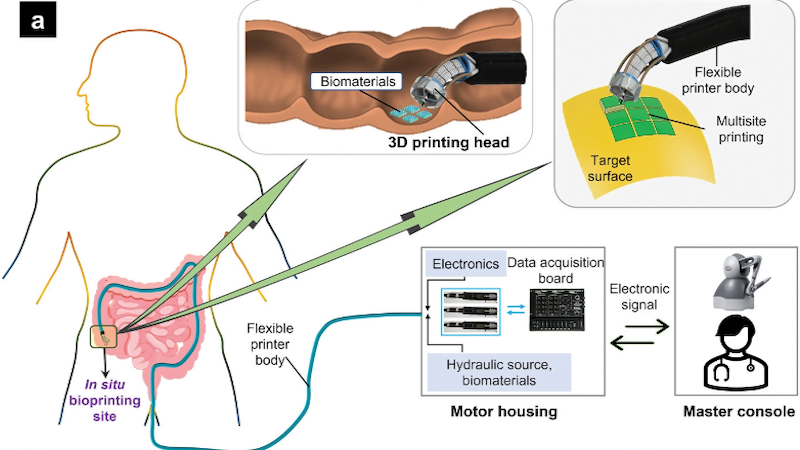
Researchers at the University of New South Wales have developed a robotic arm designed to 3D print tissue inside the human body. The system can apparently even attach biomaterial directly to organs.
In addition to digital technologies, increasingly innovative approaches are maturing in medicine. Because doctors have recognized that robots and artificial intelligence can already ensure greater treatment success today. It is true that years often pass from the idea to approval. But a new, promising approach is now emerging from the University of New South Wales.
Because the researchers have now succeeded in developing a robotic arm that can print on tissue in the body. Current approaches rely on the production of biomaterials outside the body. But that also entails some risks. Finally, any external solution requires an operation. The idea from New South Wales changes that.
Robotic arm uses biological ink for printing
With the new 3D bioprinting technique, the researchers insert an endoscope into the human body. Among other things, this consists of a nozzle through which the “ink” for the biological printing comes. There are various possible uses for the device.
In theory, the team demonstrated that the robotic arm could cut away a tumor and print the resulting hole with biomaterial. So instead of sending affected people to the operating room, the treatment takes place without opening the body. Infectious diseases can be optimally avoided in this way.
Direct access to various organs possible
Another advantage is that the robotic arm can work over a large area. Once one spot has been treated, the machine can continue directly at another. The technology provides relatively easy access to the colon, stomach, heart and bladder. Devices that are already in use are not yet able to do this.
The system can also perform classic functions of endoscopic devices. Structures can be cleaned with water or suspicious areas can be marked. So far, the team has tested the new development in an artificial colon and on a pig kidney. Chocolate, various biomaterials and a gel were used for the printing process.
Also interesting:
Source: https://www.basicthinking.de/blog/2023/03/24/roboterarm-druck-cyborgs/


